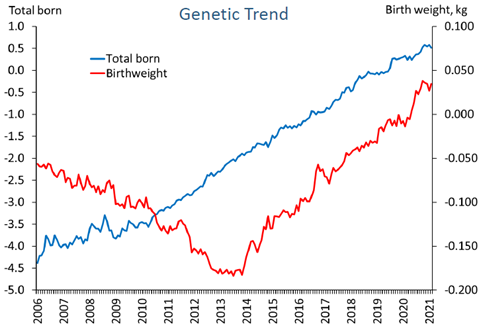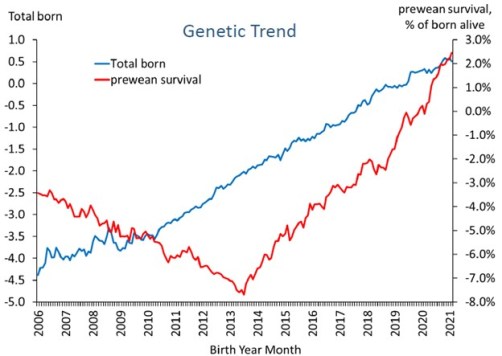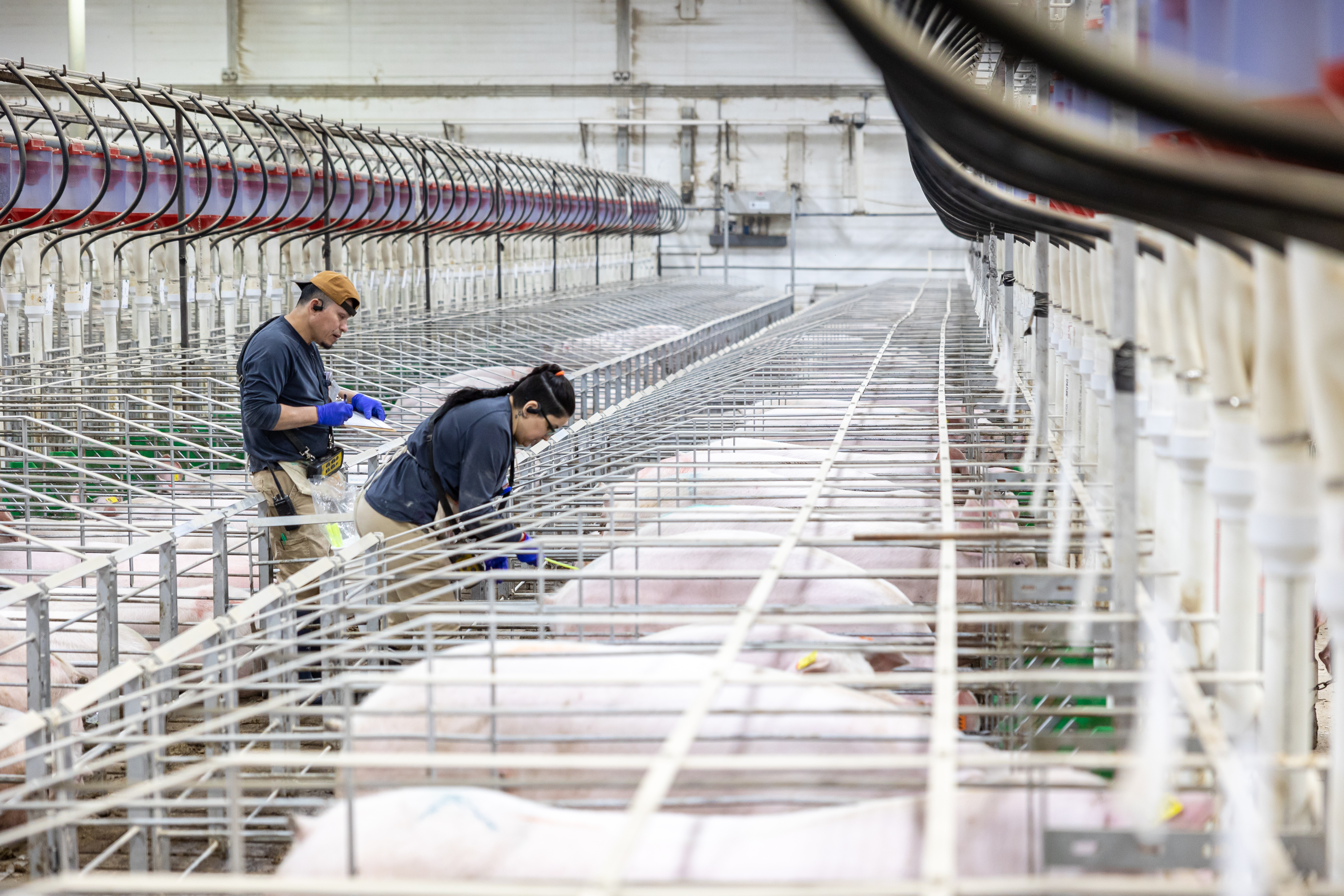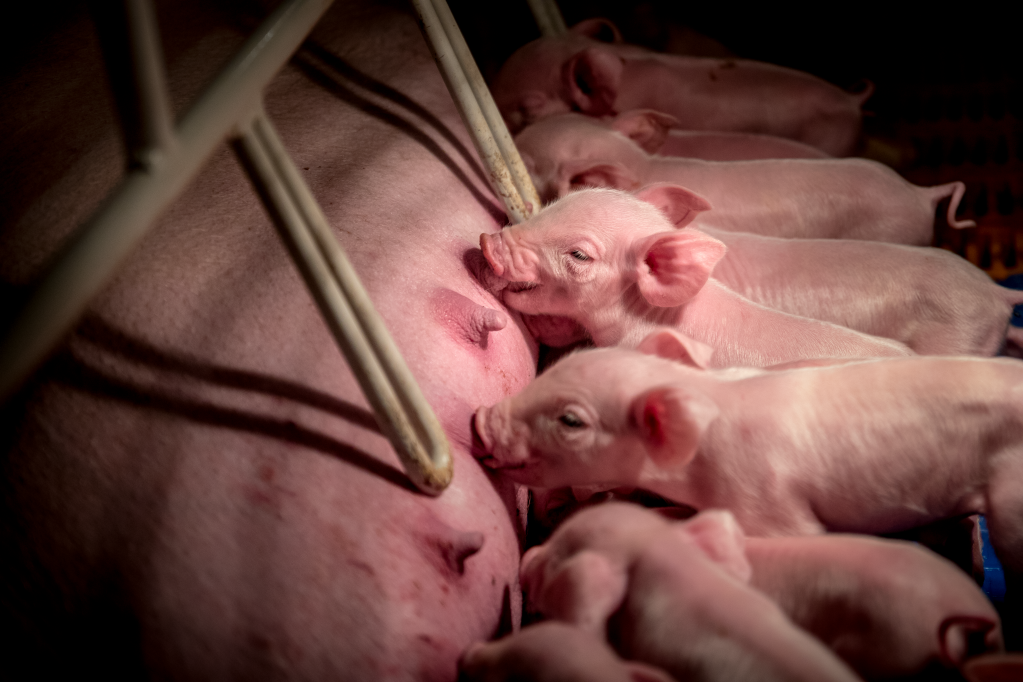What’s trending today? Sows that are low-maintenance, high-performing and efficient. These sows can care for and consistently wean quality pigs. PIC is measuring and selecting for sows with these capabilities. Here are a few highlights we are seeing in our Elite Farms:
Total born & piglet birth weight
PIC has genetically improved piglet birth weight while increasing average pig litter size at the same time (Figure 1). A healthy piglet birth weight is correlated with increased survivability, greater lifetime pig growth rate and improved feed conversion.1
In addition to this genetic trend, we see this first-hand in our Elite Farms performance. The percentage of females with low birth weights has decreased 6% (from 14% to 8%) over the last five years.

Pre-wean survivability
Are those piglets surviving? We measure the survivability of those litters. Over the past year, the genetic trend for
Are those piglets surviving? We measure the survivability of those litters. Over the past year, the PIC swine genetics trend for prewean survivability has been a 1.7% improvement (Figure 2). Driving this trend are heavy birthweights and strong sow milking ability.

Pig weaning weight and sow milking ability
Piglets rely solely on their dam for nutrition until weaning. To wean healthy, consistent litters, sows must provide ample colostrum and milk for all nursing piglets. A sow’s ability to produce milk and her milk quality are influenced by swine genetics, proper gestational nutrition, and lactating sow management.
Colostrum provides newborn piglets with energy and hydration to maintain vital body functions. It also provides antibodies critical for protection against disease, serving as the basis of a piglet’s immune system development. Colostrum intake is positively associated with preweaning survival and pig weaning weight.
We select on pig weaning weight for milk yield. Genetic potential for litter weaning weight in PIC Elite Farms has increased 2.7 lb per litter in the last year, which corresponds to an increase in individual pig weaning weight of just over 2 oz per pig.
The number of teats counts too. Having an adequate number of functional teats to nurse pigs reduces the need for nurse sows and extra labor to move and manage pigs. In the past year at PIC Elite Farms, 58% of gilts had 16 or more functional teats, and 95% had 14 or more functional teats.
Daily sow management
The Camborough® is a strong, predictable, and efficient mother that produces quality weaned pigs. Variables in daily sow management play a crucial role in allowing her to reach her genetic potential. Our technical service team continues to evaluate and update management practices recommendations to help producers achieve genetic potential.






